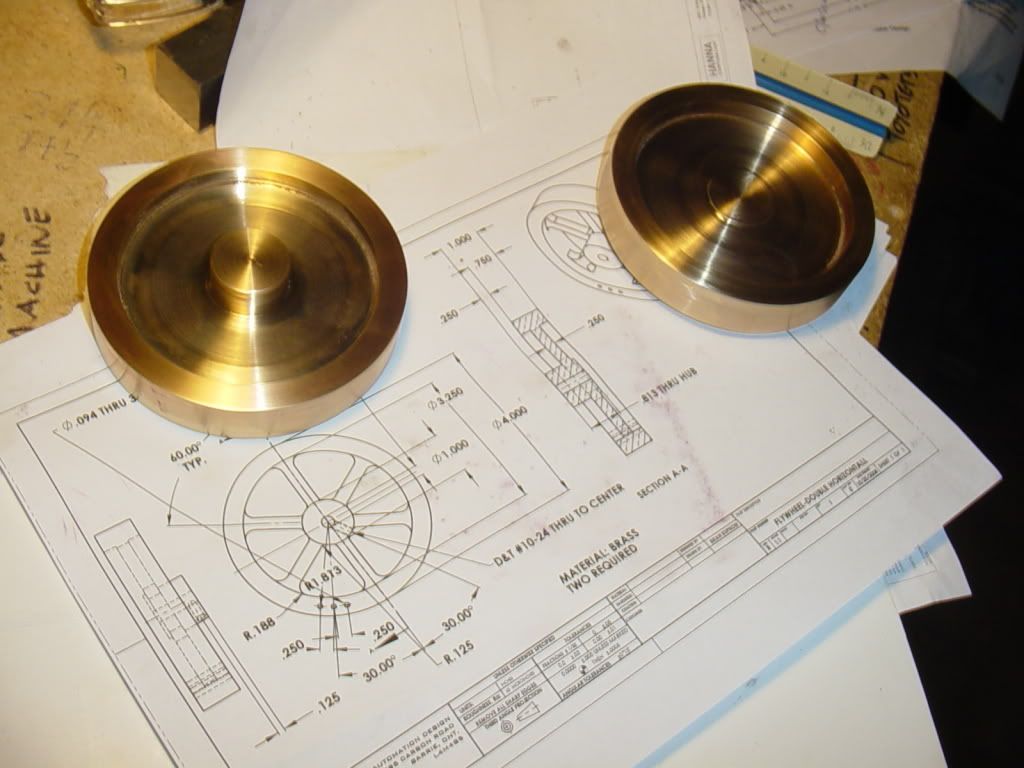At some point later today I will be doing my first set-up on the rotary table to machine "windows" in a spoked flywheel. There seem to be a number of ways to do this, one of which is to drill all the corner holes first, in all the windows, then use the rotary table to rotate the part and let an end mill cut arcs between the outer holes and between the inner holes. then traverse the bed to cut the straight sides of the windows. I an exploring a second option that involves drilling fewer holes. Since my flywheels have 6 equally spaced spokes (and 6 equally spaced windows). I an thinking of laying out 6 lines at 60 degrees that all intersect the center. I will set the rotary table up so that the centerline of the rotary table is in line with the quill of the mill, parallel to the right to left axis of the mill. Looking at this from the aspect of one window, I would use a 3/8" diameter endmill to plunge cut the first outer hole on the center of one of these lines, but about 0.030" closer to the center than it should be. Then with the cutter in place, I can move the mill table, thus being able to "sneak up" on a point where the cutter just kisses the inside of the outer rim of the flywheel. Then I can rotate the rotary table, first "x" number of degrees clockwise to cut half the outer arc cutout, then return the rotary table to 'zero" and rotate it "x" number of degrees counterclockwise to cut the other half of the outer arc cut.----I can then rotate the rotary table 60 degrees and do the next window, and keep on doing that untill all the outer slots are cut. The same procedure would be used to cut the inner slots.----Why would I do this---Well, because I like the idea of being able to "sneak up" untill the cutter just kisses the inside of the outer hub and the outside of the inner hub, so that everything stays uniform. If I drill the holes first, that doesn't give me the ability to "sneak up" on those dimensions, and I can see the possibility of getting my holes out of place a bit radially--then the radius cut by the endmill will not be in exactly the same place as the radius which was previously cut on the lathe.---I hope this makes sense.---advice please.--Brian








